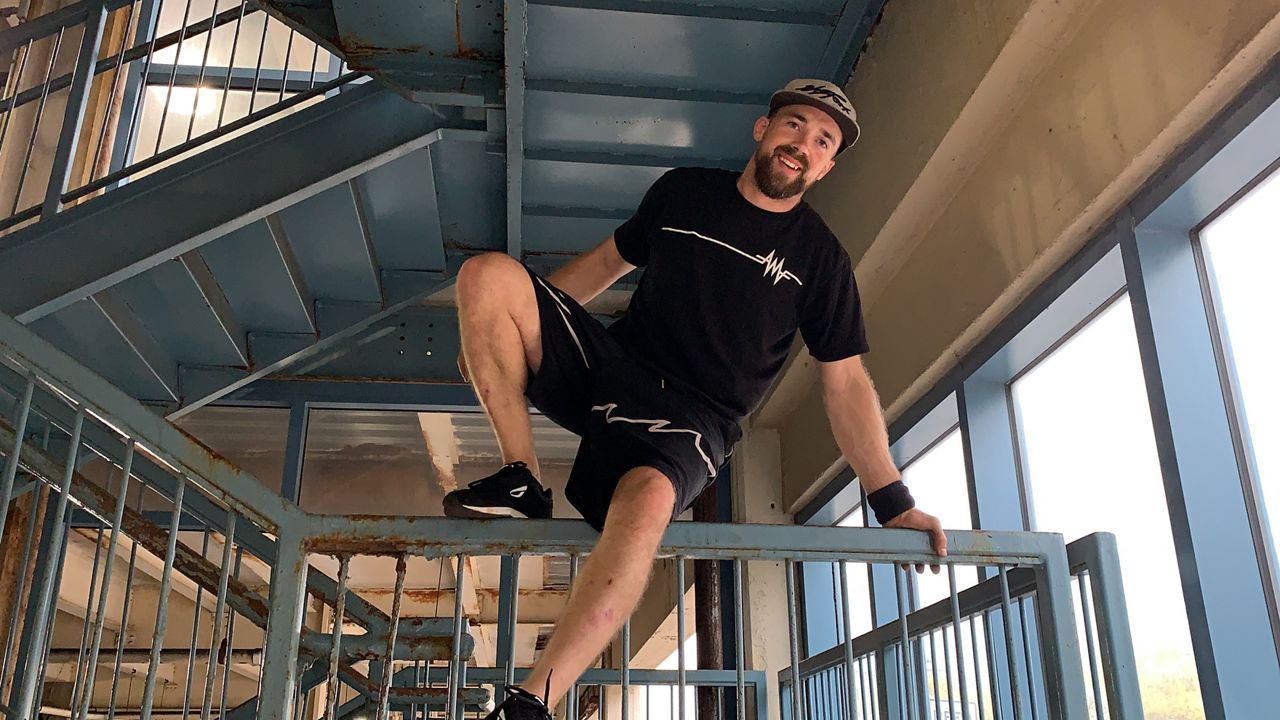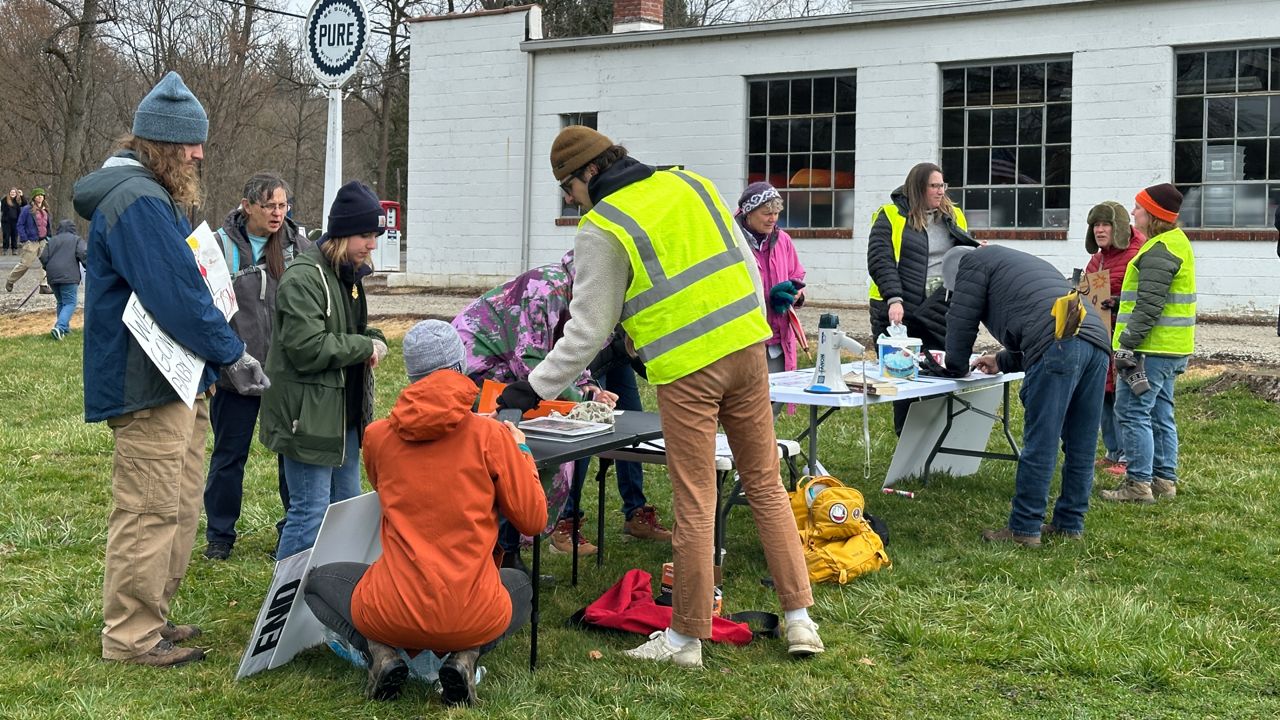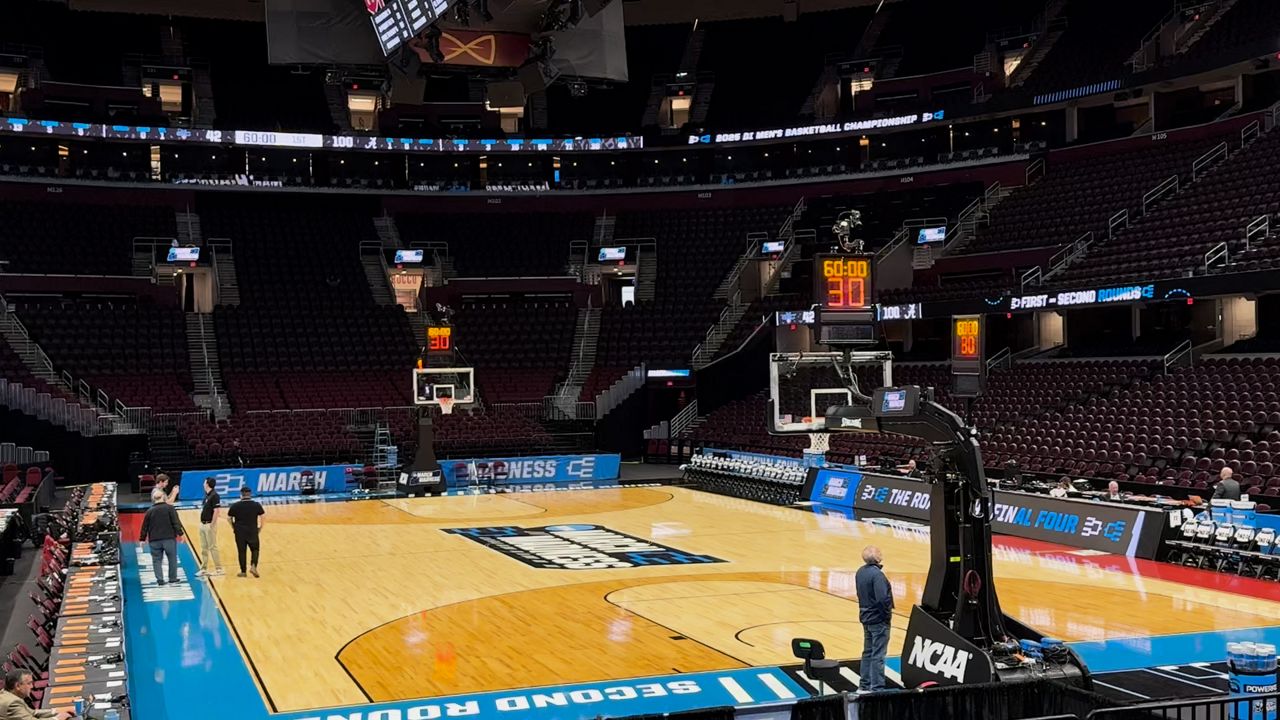AKRON, Ohio — On the streets of Akron and Cleveland, Andrew Foster, 32, can be found mastering parkour. He went to college at Miami University in Ohio and graduated with a degree in international studies. It’s also where he started practicing parkour. He’s completely self-taught and has been training almost every day for 14 years.
What You Need To Know
- Parkour originated in France in the 1980s
- It’s widely thought of as a dangerous sport
- The owner of Akron Movement Family is working to debunk that myth
- He’s trying to help people have a more positive impression of the sport
“After I graduated college, I realized I love working with kids,” said Foster. "I realized I would go out to train parkour, just in a local park. And I would go out to have a training session to work on skills. And then kids would come up to me and ask me what I was doing. And could you teach me that? And what are you working on? And can I try that? And two hours later, I'd realized I didn't get any training. And I spent the whole time just like teaching kids. So it kind of dawned on me, I really enjoy doing that. So, I thought maybe I would try and pursue that.”
His passion for parkour soon became his life. He launched Akron Movement Family in 2017. Before the pandemic, it was northeast Ohio’s first parkour facility. COVID-19 shut the gym down, but he still operates fully outdoors.
“For the last year and a half, I've been doing parkour classes for kids and adults, as well as private lessons, all outdoors, either in my yard with the obstacles that I have available here, or I do them in parks, playgrounds and other local spots that have interesting architecture that are good for parkour,” said Foster. “It was difficult, but I've been really thankful. Because it's great to see my students grow being outside of the gym space. When you train in the gym, the gym sort of comforts you, you start to feel safe and comfortable in that environment. But often, students that learn in that environment tend not to branch out and not to learn to face their fears in other situations.”
He trains students like Charlotte White, 9, who started her parkour journey two years ago.
“I was seven, I was just practically bouncing around the house, I learned how to push myself up a door frame," said White. "And I kept wanting to do more and more, but we didn't have the kind of space to do it."
White said she likes the sport because it’s challenging, but also because she’s got something to prove.
“I just want to learn how to do more stuff, not just to tell my friends at school that I can do it, but to kind of also prove because a lot of boys in the school are considered the only people who can do that kind of stuff,” said White. “And I want to prove that girls are not wimpy and they can do that kind of stuff, too.”
Parkour is a sport many consider dangerous, but Foster said it is actually quite the opposite.
“Parkour is teaching you to unlock the connection between your mind and your body so that you don't have to be afraid of things,” said Foster. “You can look at something and say, 'I'm afraid of that'. But why am I afraid of it? Am I afraid of slipping? Okay, well, what could I do to make sure I don't slip, maybe I'm afraid of falling? Well, maybe I should practice falling first. So Parkour is a progressive method, where you learn how to approach things safely.”
Foster teaches the art of parkour to students of all ages.
“Personally, I think parkour is for everyone," Foster said. "I've coached three-year-old kids. And for them, it's just learning how to move their body around. And I've coached every age. I have a student who's in her 60s, and she came to me because she was worried about falling and breaking her hip. So I do coaching with her. We were working on learning how to fall, then she started to excel at that, and she started to get interested in other things."

Parkour is a sport that encourages self-improvement on all levels. It reveals one's physical and mental limits while at the same time offering ways to overcome them.
“One of the most fulfilling things about parkour for me is going through challenges where you have a challenge, something you can't do, you look at it, and you think ‘I can't do that.’ And then through work and progression, step by step, you can safely work up to a point where you then achieve that, and that feeling of doing something you thought you couldn't do is incredibly rewarding,” said Foster. “I found that coaching, I get essentially the same reward because all of these things that I've learned to do. I'm now vicariously getting to see my students go through that same process.”
Foster teaches people to move through space safely and comfortably, all while facing their fears. Parkour is still small in the Midwest and he hopes to help people have a more positive impression about it.
“I love parkour, because it has changed the way that I think and feel and the way I interact with the world,” said Foster. “It's given me a way to look at challenges and not view them as problems, but view them as things that are actually enjoyable and ultimately fulfilling.”
The biggest thing Foster said people need to remember is that the sport looks different for everyone.
“It's just a matter of what Parkour is for you,” said Foster. “It might be learning to move your body, it might be learning how not to hurt yourself if you fall. It might be learning how to climb over a fence if you get stuck. Or let's say you're stuck out of your house, you need to be able to climb up into a window.”
Parkour movements should be done under supervision of a trained professional for safety reasons. For more information on Akron Movement Family, click here.









